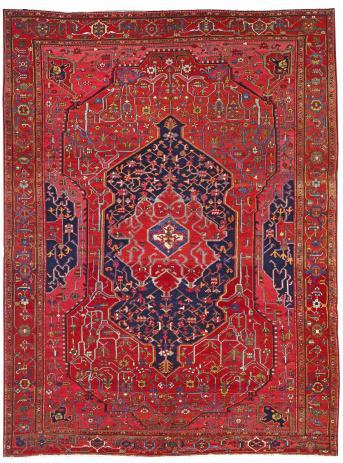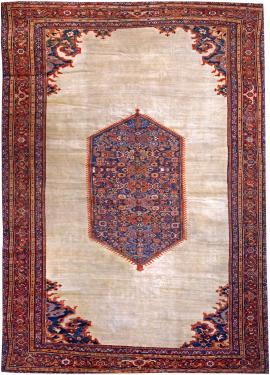Persia - Geometric Designs
Despite their origins within sophisticated urban workshops many Persian carpets display a strong tribal quality. Heriz and Bakshaish carpets are amongst the most recognizable within the Persian repertoire. The familiar configuration of a central medallion, spandrels and borders is rendered here in an inimitably geometric fashion with an engaging simplicity of line. Some examples display all over designs with abstract interpretations of willow trees or ascending palmettes. The rugs of Fereghan are prized for their sturdy construction, angular drawing of floral decoration, quiet all over patterning and use of a splendid apple green dye. The Bakhtiari, a colorful nomadic tribe from the South produce dramatic designs distinguished by the liberal use of blue-black or charcoal both as an outline to individual design elements or as a field color. The extremely densely woven Bidjar, the ‘Iron Rug’ of Iran, from Kurdistan in the north, is known for durability and resilience, a mainstay of traditional country interiors, they are the ultimate in library carpets. In 1883, Ziegler & Co. of Manchester, England, established a workshop in Sultanabad, Iran to weave carpets from designs supplied by department stores including B. Altman and Liberty of London. The Ziegler Mahal carpets adapted traditional Persian designs to combine bold, allover patterns and softer palettes that appealed to a more restrained Western taste. Throughout Iran, geometric designs were produced by nomadic and village based weavers from the Belouch in the east, the Kurds in the west and the Qashqa’i in the south
Heriz Carpet
SOLD
Persia, 19th Century
12ft 10in length x 9ft 8in width
3.91m x 2.95m

